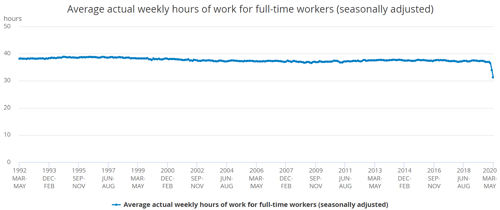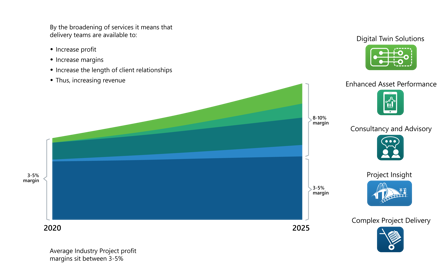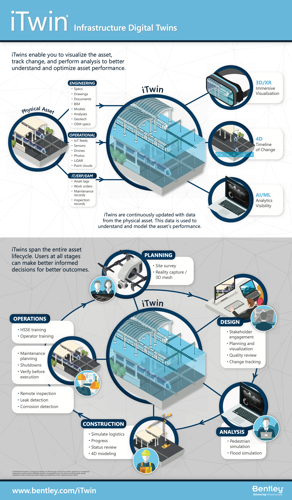

With the easing of the lockdown, what is the “new normal” for site construction and maintenance? By Mark Coates from Bentley Systems.
Join other savvy professionals just like you at CIHT. We are committed to fulfilling your professional development needs throughout your career
Before the COVID-19 pandemic, the office was where millions of us spent just under a third of our average working week sat behind a desk of sorts.
Since the lockdown, however, of the 32.6 million in employment in the UK, around 8.7 million people say that they have worked from home; this is less than 30% of the workforce. Some companies have already intermated that this situation could become the future.

Source: www.ons.gov.uk
COVID-19 has brought major changes to construction’s back offices. Forced to stay at home, many office employees have kept business operations running via remote work, relying on technology like videoconferencing, collaborative software, emailing, texting, and even Whatsapp to stay in touch.
If you look to comments from industry leaders, there is a common theme that working from home is the way of the future. Jes Staley, CEO of Barclays, said, “The notion of putting 7,000 people in a building may be a thing of the past” while businessman Sir Martin Sorrell suggested that he’d rather invest the GBP 35 million that he spends on expensive offices in the people instead.
So, is the game up for the office as we know it?
While we might feel melancholy about it, I personally believe that the office in its present form is probably a thing of the past. Last week, I was chatting to a client who works at a major design company and he said, “We used to have 768 people coming into this office every day. For the last eight or more weeks, we’ve had 12 people, and the productivity hasn’t diminished by a great deal.”
He continued, “Anyone who thinks things are going to go back to the way things where is fooling themselves. There are now two key drivers that weren’t there before, and they have increased acceptance of new ways of working and both of these revolve around losing what the team has suddenly gained: independence.
One driver is the fear of returning to the office for health reasons and the other is the “new” family routine of evening meals together and no long-distance commute home. Staff don’t want to give up that freedom by returning to the old routine of going to the office daily. Thus, the desire to adopt and embraced new ways of working has been fully accepted by all.”
The most common thread that I have heard is that organizations were going to roll out Microsoft Teams this year, but instead of taking 12 months to do so, they did it in eight weeks. And because of the mass usage, we have seen the platform develop. For example, before the global pandemic, you could only see four people on a video call at a time. Recently, Teams has upped it to nine.
However, declaring the end of the office is not a simple process. There is a personal attachment to having a place to go to and we should expect a substantial decrease in the amount of time that people spend in the office; however, office working will not be over forever.
With talks of a recession coming in the wake of COVID-19’s economic impact, people may want to be visible. Particularly in times of economic crisis, people will start thinking I want to be in the workplace and the boss needs to see me and what I am delivering. This mentality may have been one of the corner stones that held back data adoption that COVID-19 forcefully removed.
There will, unfortunately, be job losses, companies dissolving, and dramatic changes across industries, including new companies forming as a result of mergers and acquisitions as companies pool their resources. But there will also be a tranche of new companies rising to the top of the job market as the market delivers and fully embraces the availability of technology—new and old. I know that Bentley Systems is working closely with companies like Costain on new methods and ways of working.
An option for office working in a post-COVID-19 world is that offices will remain as central hubs where senior managers are based, with employees travelling in once or twice a week to meet with their bosses. This is Twitter’s plan, who announced that it is allowing its staff to work from home forever but will keep its offices open if people want to come in.
Working from home is not new. In fact, it’s become increasingly popular in recent decades, and many companies have already been trying to save money on rent by hiring co-working space such as we-work.
Cost is going to be the big driver when companies make the decision on whether to allow their workers to work from home. Even before COVID-19, several companies had already had a change in mindset, thinking that “we are spending all this money on rent so let's move to more home-working.” COVID-19 has just escalated the speed and process of an already-occurring change.
Personally, I have spoken to several clients—both asset owners and project delivery teams—about ways of overcoming major issues when reopening and constructing new offices, including maintaining social distancing. It is possible to use existing technology to overcome these key issues, particularly technology from Bentley’s portfolio.
One such product is LEGION, which gives users the ability to simulate and analyse foot traffic on assets like rail and tube stations, stadiums, office complexes, shopping malls, and airports. It can accurately test designs and operational or commercial plans to enhance footfall, wayfinding, crowd management, and safety and security strategies. With the new requirements for social distancing, LEGION helps test the impact of changes such as new occupancy levels, barriers, queuing and operational strategies.
In April, Bentley announced that it was waiving subscription fees on ProjectWise 365 through to September 30th and we recently announced a similar offer for LEGION, helping clients analyse their assets and be better prepared for increased traffic follow both on sites and within assets, such as offices. These two products support both the asset owner and the design team.

Digital technology can help organizations meet their goals and deliver complex projects on time and within budget.
With regards to site-based projects, several key UK contractors have reached out to me regarding SYNCHRO and ContextCapture. They are using SYNCHRO for scheduling and task management to keep a head of the delivery curve, working out how deliveries arrive on site and who needs to be in that location. The applications have already been used for these purposes before the outbreak of COVID-19 by both Tideway, working on a very large site, and the delivery team on the Shad Thames Pumping Station, which is a very small site. With ContextCapture, contractors are using reality meshes to work out where the project sits and the layout of the surrounding site area. By using these applications, contractors can do all this work remotely.
Work is currently underway to combine 4D models with various forms of context capture. From point clouds to photos, we are looking at what happens when we combine these formats together in a web browser. This technology will enable remote observation and digital tracking of work-in-place. Also, with advances in computer vision and both artificial intelligence and machine learning, it is increasingly possible to automatically detect object, machines, people, and conditions in the field.
My final point is the new and increased interest in digital twins, as asset owners look for new ways of remotely monitoring assets.
Bentley’s iTwins enable you to visualize the asset, track change, and perform analysis to better understand and optimize asset performance. As iTwins span the entire asset lifecycle, users at all stages can make better informed decisions for better outcomes.
With this desire to work remote or access asset data remotely, Bentley is supporting independent software vendors and start-ups via the iTwin Partner Program. This program is for vendors who develop applications on the iTwin platform and bring them to market. We aim to foster a thriving ecosystem of organizations who share our vision of creating infrastructure digital twins.

With Bentley’s iTwins, organizations can make better informed decisions for better outcomes throughout the entire asset lifecycle.
The office isn’t going away, but it will certainly look different than what we’ve been used to, and the key word will be collaboration. Collaboration has been a buzz word for many years now but with COVID-19 and remote working, it brings a new essence to delivering digitization. To meet and overcome the new challenges, design, construction, and maintenance organizations will need help navigating the challenges brought about in our post-COVID-19 world. One way that they can successfully meet these challenges is by advancing their digital technology and fully embracing the new and greater enthusiasm for adoption.
Join other savvy professionals just like you at CIHT. We are committed to fulfilling your professional development needs throughout your career
{{item.AuthorName}} {{item.AuthorName}} says on {{item.DateFormattedString}}: